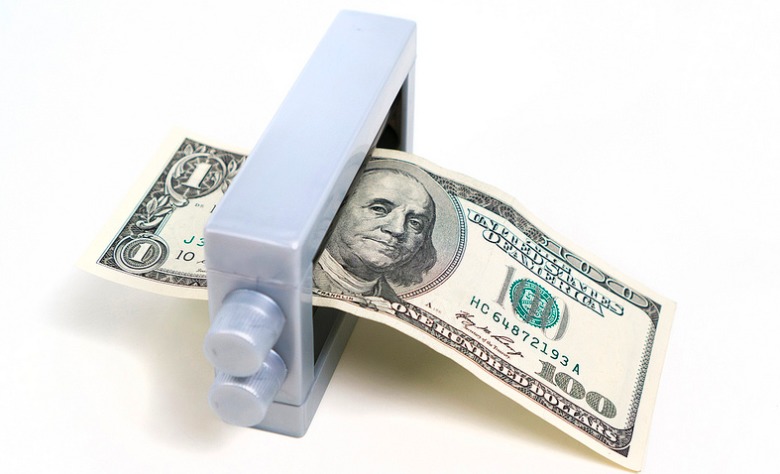I read something in Barron’s that really put me in a foul mood.
Vito Racanelli writes:
There’s one number that explains a lot of things: 5.52%. Over the 20 years ended 2018, that’s been the nominal compound annual growth rate (CAGR) of the S&P 500.
It might not feel like it after a decade-long bull market, “but we are coming off 20 of the worst years for compounded returns since the Great Depression,” says Nicholas Colas, co-founder of DataTrek Research. The average trailing 20-year market CAGR since 1928 is 10.7%. Blame the two negative-35%-plus bear markets since 2000.
Lackluster Returns
Over the past 20 years, the market has returned barely half its long-term average annual gains.
And I’m willing to bet that most investors saw returns even lower than that. (Most investors tend to sell near bottoms and miss out on the most explosive early years of a bull market.)
But this is where I start to get grouchy. Colas goes on to suggest that, since we’re coming off a lousy 20-year stretch in the market, the next 20 years should be a lot better due to mean reversion.

Hold On
In other words, in order for the market’s long-term returns of 10.7% to hold, we have to see annual returns well above 10.7% in order to make up for the past 20 years of just 5.52% returns.
In my opinion, this may be the stupidest argument I’ve ever heard.
Let’s start with valuations.
A big reason for the market’s lackluster performance over the past 20 years is that we started the period in 1998, smack dab in the middle of the largest stock bubble in U.S. history. At the beginning of 1998, the S&P 500 traded at a P/E ratio of 24, well above the long-term average.
Starting Point
The returns you earn are a product of the price you pay. If you overpay, your returns are going to be lousy. Anyone buying in 1998 paid too much for their stocks and then had to accept lower returns over the next 20 years. It’s really that simple.
Now, let’s compare this to the preceding 20-year period, 1978 to 1998. Over that period, the S&P 500 returned about 14% per year, well above the long-term market average.
Cheap Market
Again, it’s simple. In 1978, after a decade of stagflation, the market was cheap. The S&P 500 traded at a P/E ratio of just 8. Anyone buying in 1978 was buying at a bargain-basement price and thus enjoyed a fantastic 20 years of returns.
So, where are we today?
Unfortunately, it’s looking a lot more like 1998 than 1978. The S&P 500 trades for about 20 times earnings.
Now, we can split hairs as to whether the P/E ratio is the best metric to use here. But other metrics, such as the cyclically-adjusted price/earnings ratio (“CAPE”) or the price/sales ratio tell a very similar story, in my opinion.
Market Heresy
Stocks are not cheap today. And thus it’s not realistic to expect returns over the next 20 years to be much better than over the last 20.
This is bordering on market heresy, but I also take issue with the notion that stocks “have” to return around 10.7% per year.
In 1928, the stock market was still the wild, wild west. It wasn’t really regulated, and it was essentially a casino for rich people. There were no 401ks, and the average American had no access or exposure to stocks.
The 1950s
The market didn’t really become accessible to the average American until the 1950s, when mutual funds became popular.
And even then, few Americans were investors. I’d argue that investing didn’t really go mainstream until the late 1980s.
Furthermore, up until arguably the 1940s, the United States was still an “emerging market.”
Compare that to today. Virtually every middle-class American has at least indirect exposure to the stock market via their company 401(k) plan or pension, and the capital markets are tightly regulated by an alphabet soup of government agencies.
Getting Real
All else equal, a highly-regulated and developed market should produce returns that are lower than those of a loosely regulated emerging market. The returns have to be higher in a wild emerging market in order to justify the risk.
I’d argue that the 5.52% returns of the past 20 years are the better example of what we should expect going forward than the 10% of decades past. This is the “new normal” for a developed market with broad participation trading at premium prices. And in order to get that 5.52% annual return, you’re going to have to stomach a lot of volatility.
Income Opportunities
I don’t want to buy, hold, and pray for 5.52% annual returns. I look for attractive income opportunities that are off the beaten path.
For instance, it’s not at all uncommon for me to find stocks or closed-end funds paying 8% or more in dividends alone, not including any capital gains.
Photo Credit: Pictures of Money via Flickr Creative Commons
Disclosure: Certain of the information contained in this article is based upon forward-looking statements, information and opinions, including descriptions of anticipated market changes and expectations of future activity. The author believes that such statements, information, and opinions are based upon reasonable estimates and assumptions. However, forward-looking statements, information and opinions are inherently uncertain and actual events or results may differ materially from those reflected in the forward-looking statements. Therefore, undue reliance should not be placed on such forward-looking statements, information and opinions.

